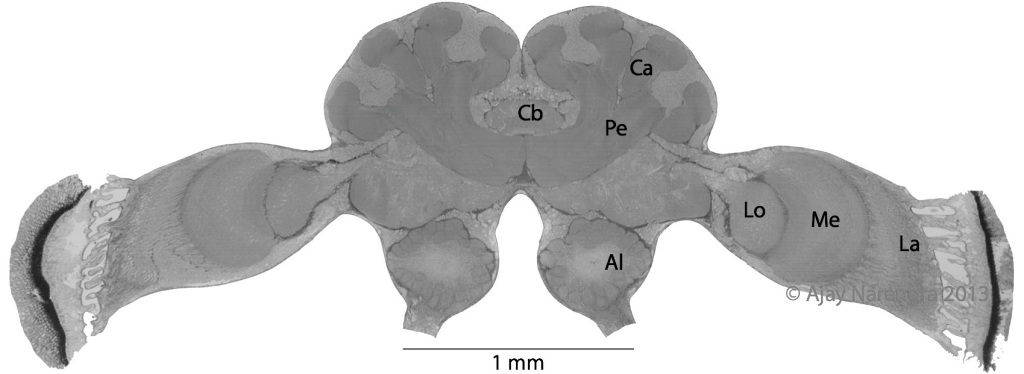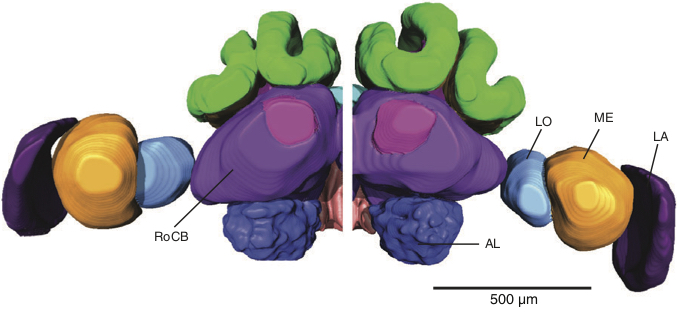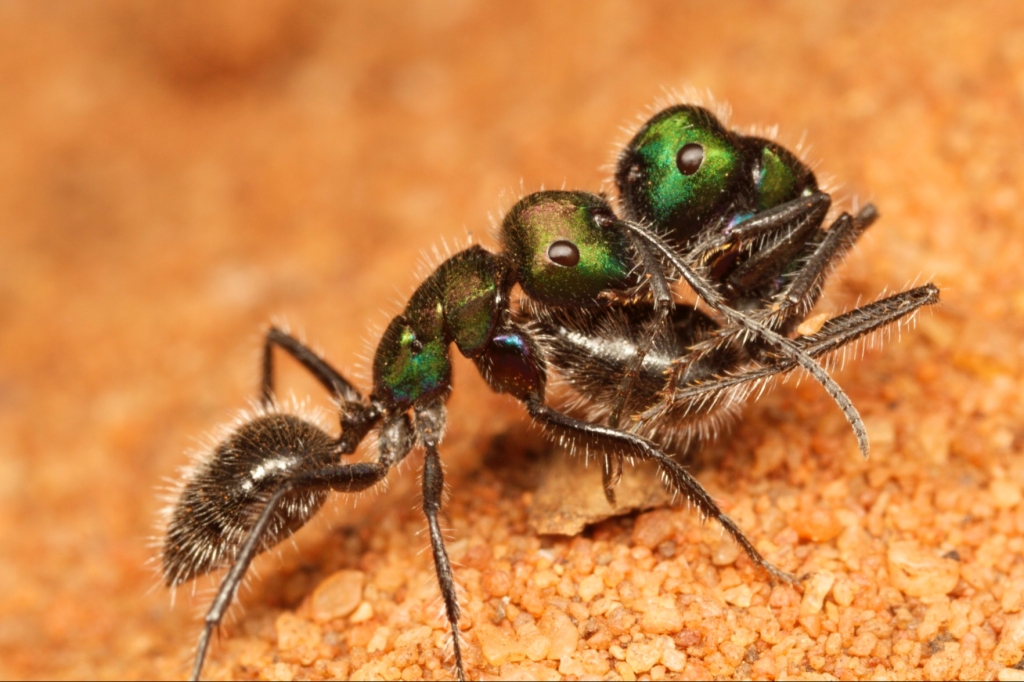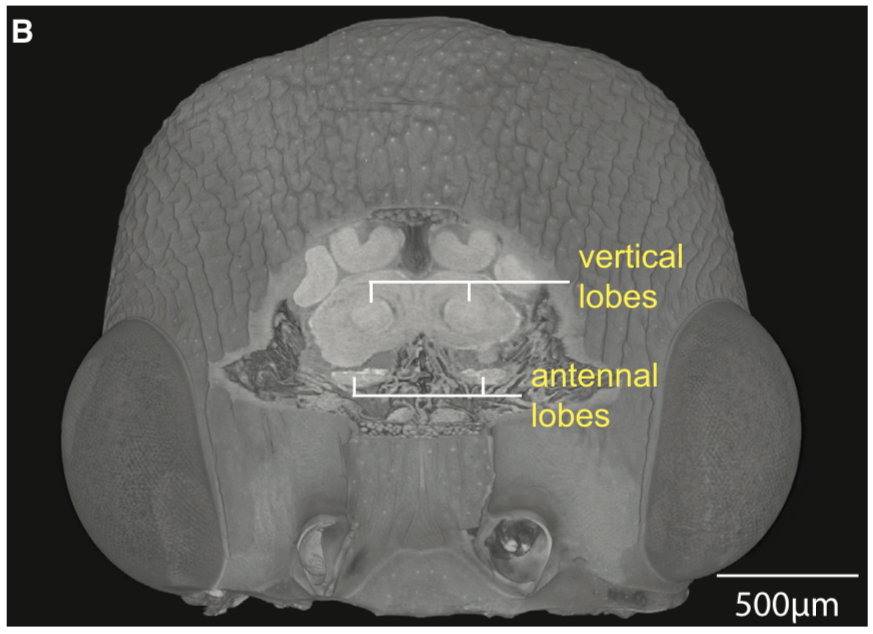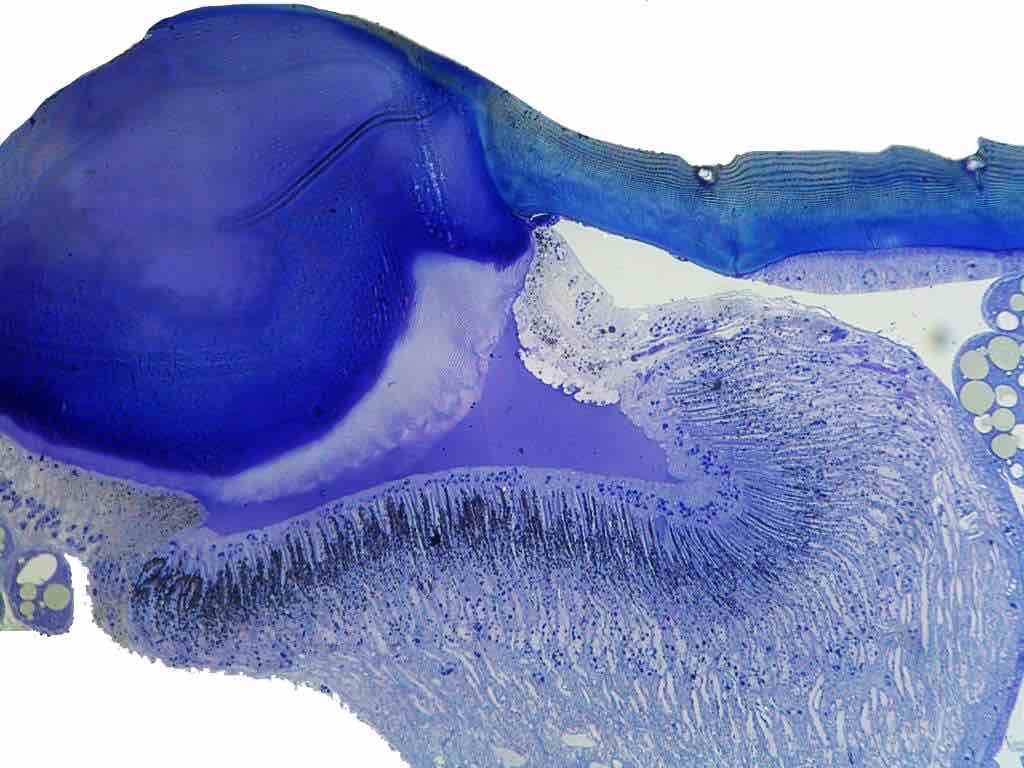Information processing at the limits of size
Ants exhibit dramatic differences in body size within and between species. Irrespective of size, all individuals have to be competent navigators. Here, we identify the behavioural and neural adaptations evolved by miniature individuals to be competent navigators.
Neural investment to suit different lifestyles
Ants exhibit dramatic differences in body size within and between species. Irrespective of size, all individuals have to be competent navigators. Here, we identify the behavioural and neural adaptations evolved by miniature individuals to be competent navigators.
Visual adaptations suited for different lifestyles
To move from a day- to a night-active lifestyle animals require substantial visual adaptations to cope with the dramatic changes in light intensity. We study congeneric Myrmecia species active at discrete times of the day. In these we have found nocturnal species have largest lenses and wide rhabdoms that increases their optical sensitivity.
Obstacle detection and avoidance in walking and flying Hymenopterans
Flying insects must effectively manage their foraging behaviours, avoid obstacles and maintain collision-free flights. The cost of collision can vary from just increasing travel time to leading to death. We study how bees navigate through naturally occurring obstacles, such as webs of Orb-spiders. Stay tuned!
Information transfer during nestmate carrying and tandem running
While most ant species forage individually, some embark on more adventurous manners to take their nest mates to a particular goal. In some species, ants engage in a behaviour called tandem running, wherein a leader who most likely ‘knows’ the location of the goal, leads a follower to it. In some species, ants resort to carrying nest mates during nest relocation. In both these cases, we are interested in what information the follower (in tandem running) or passenger (in carrying pairs) acquires and how it utilises it on its subsequent trips
Neuroarchitecture of Central complex in Hymenopterans
While most ant species forage individually, some embark on more adventurous manners to take their nest mates to a particular goal. In some species, ants engage in a behaviour called tandem running, wherein a leader who most likely ‘knows’ the location of the goal, leads a follower to it. In some species, ants resort to carrying nest mates during nest relocation. In both these cases, we are interested in what information the follower (in tandem running) or passenger (in carrying pairs).
Biomechanics and Physiology of Jumping
Jumping is a unique mode of locomotion that insects and spiders use to travel quickly, avoid obstacles and also to capture prey. Such jumps are executed by animals that come in a range of sizes. The power amplification for jumps in some cases is derived from muscles, catapult jump mechanism, or use hemolymph to drive hydraulic extension of legs. Using high speed videography coupled with micro CT techniques we are investigating the impact of miniaturisation on the power amplification for jumping.
The Simple Eyes of Hymenopterans
Flying insects have simple eyes called ocelli that assist in attitude control and horizon detection. In some ants, ocelli is present in pedestrian workers. There is some indication that ocelli detects changes in the pattern of polarised skylight. We have found that nocturnal species tend to have large ocellar lenses and wide photoreceptors suggesting they act as a light capturing structure. Some flying nocturnal ants also have a reflective structure called tapetum. We are investigating the function of ocelli using neuro-anatomical, histological and behavioural methods.


